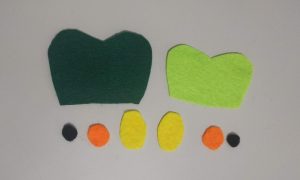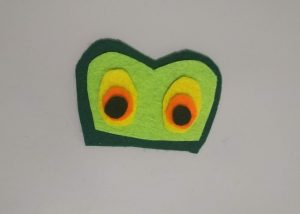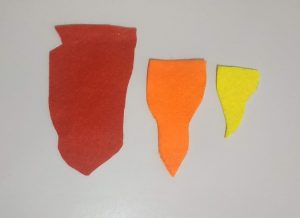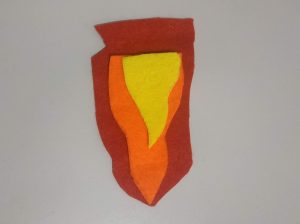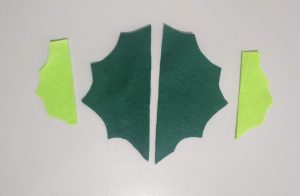St George’s Day in England (on 23rd April every year, the date when Saint George died) remembers St George, England’s patron saint.
St George was born around 280 AD. Even though he is the patron saint of England, he wasn’t actually born there. He was born in a place called Cappadocia (in the modern day, that is in Turkey!) He was a Roman soldier who was tortured and killed by Emperor Diocletian for refusing to renounce his Christian faith in 303 AD on 23rd April.
 St George isn’t just the patron Saint of England! Interestingly, St George’s Day is celebrated not just by the English, but by several countries and cities of which Saint George is the patron saint (mainly observed by Christians from the Anglican, Lutheran and Orthodox churches). These countries include Greece, Cyprus, Portugal and Croatia among others. In Greece, Saint George Day, or Agios Georgios Day, is also celebrated on April 23. However, if Easter is after April 23, then it is celebrated on Easter Monday. He is the Patron Saint of farmers (after all, Georgios, a Greek name, means “worker of the land”), soldiers (since during his life he used to work as a military officer), archers and even… scouts!
St George isn’t just the patron Saint of England! Interestingly, St George’s Day is celebrated not just by the English, but by several countries and cities of which Saint George is the patron saint (mainly observed by Christians from the Anglican, Lutheran and Orthodox churches). These countries include Greece, Cyprus, Portugal and Croatia among others. In Greece, Saint George Day, or Agios Georgios Day, is also celebrated on April 23. However, if Easter is after April 23, then it is celebrated on Easter Monday. He is the Patron Saint of farmers (after all, Georgios, a Greek name, means “worker of the land”), soldiers (since during his life he used to work as a military officer), archers and even… scouts! 
Legend has it that George slew a dragon. The story says that he rode into a place called Silene. There he met a man who told him about a terrible dragon who was terrorising the nearby kingdom. Every day, the dragon demanded the sacrifice of a young maiden and now only the king’s daughter remained alive. St George rushed to the aid of the princess. He told the king that he would kill the dragon if he promised St George that his people would be baptised. The king agreed and St George killed the dragon after piercing it with his sword beneath its wings. He also saved the Princess!
This story, though, was actually made up (during the twelfth century, hundreds of years after his death – the dragon was another way to describe the devil!) Historians believe that St George was never a knight in shining armour… He had never slain a dragon, and he wasn’t a knight either. Regardless of whether the tale is true or not, St George is a symbol of courage in the face of adversity, as well as the English ideals of honour, bravery and gallantry.
But what is his connection to England?
During the First Crusade to Jerusalem in 1098, it is said that St George appeared as a vision to lead the Christian knights during a siege. About 100 years later, King Richard III fashioned his army’s uniform on the cross of St. George.
On St George’s Day, a lot of people celebrate with a nice, traditional English meal. Some of the most traditional meals are fish and chips, shepherd’s pie, roast dinner or afternoon tea.

Shepherd’s pie
St. George’s Day is not a public holiday. It is celebrated with parades, dancing and other activities. These activities range from Morris Dancing to even watching a puppet show (Punch and Judy shows). St. George is also the patron saint of scouting, so the scouts often take part in a parade on St George’s Day.
Around St George’s Day, you might see a white flag with a red cross. This is St George’s emblem and also the flag of England. Flags with the image of St George’s cross are flown on some buildings, especially pubs, and a few people wear a red rose on their lapel. The hymn “Jerusalem” (based on the poem written by William Blake in 1804) is also sung in cathedrals, churches and chapels.
Jerusalem
And did those feet in ancient time
Walk upon England’s mountains green?
And was the holy Lamb of God
On England’s pleasant pastures seen?
And did the countenance divine
Shine forth upon our clouded hills?
And was Jerusalem builded here
Among these dark Satanic Mills?
Bring me my bow of burning gold:
Bring me my arrows of desire:
Bring me my spear: O clouds unfold!
Bring me my chariot of fire.
I shall not cease from mental fight
Nor shall my sword sleep in my hand
Till we have built Jerusalem
In England’s green & pleasant land.
(William Blake)
St George’s Day Activities
St George’s Dragons 
- These great paper plate dragons are really easy and inexpensive to make. Paint two paper plates each in contrasting colours. Cut one in half to create the dragon’s body and then draw the head, tails and wings onto the other one. Carefully cut these out. With the flat edge of the body at the bottom, use PVA glue to attach the head on the left corner and the tail on the right. For the wings, attach one to the front of the plate on the top curved edge, and the other behind next to it. Stick on some googly eyes and give your dragon a smiley or fierce mouth. Finally, paint a lolly-pop stick green (or the same colour as the body), and attach this to the bottom of your dragon on the reverse of the plate.
- Make your fierce dragon out of a sock (preferably green, but any other colour will do as well!) On the heel add the tongue and sew (or glue with a hot glue gun!) the mighty dragon wings, mouth, nose and eyes made out of felt.
For the eyes (you can also use googly eyes) :
For the mouth:
For the muzzle:
For the wings:
This is our dragon!!!
For more wonderful activities visit:
Creative Station

































